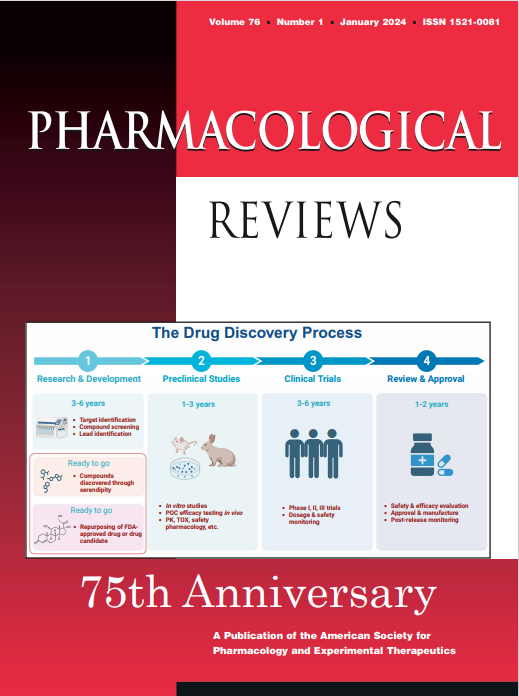多酚与药物在 2 型糖尿病中的融合前景:挑战、风险和策略。
IF 17.3
1区 医学
Q1 PHARMACOLOGY & PHARMACY
引用次数: 0
摘要
2 型糖尿病(T2DM)是一种复杂的疾病,可导致多种危及生命的继发性健康问题。目前的治疗策略主要围绕严格的血糖控制,但这很难实现,而且由于可能发生低血糖事件,往往会带来危险。大量长期研究表明,疾病的进展和继发性健康问题的发展涉及复杂的途径,包括因血糖水平波动而导致的低度炎症。越来越多的临床证据表明,使用多种药物(可能与胰岛素联合使用)来有效控制 T2DM 是有效的。另一方面,尽管 "茶多酚 "的潜在治疗效果巨大,但大部分尚未开发,人们对这种做法仍然普遍持怀疑态度。然而,对于任何以证据为基础的临床干预来说,效益和风险的平衡都是核心问题,并受生物药剂学原则的制约。在本文中,我们概述了目前临床上对药物组合的看法、早期开始使用胰岛素的理由以及新型剂型在满足 T2DM 病理生理变化方面的优势,并强调需要进一步的临床研究来证实这些方法。我们还论证了传统药物及其与药物的结合,并概述了这样做所面临的固有挑战,同时还为未来的研究和临床实践提出了建议。意义声明 2 型糖尿病会引发危及生命的继发性健康问题,而这些问题往往难以治疗。本综述深入阐述了通过联合疗法预防/延缓继发性健康问题,并强调了有效的治疗策略在实现此类联合疗法转化方面的作用。我们将论证多酚对糖尿病的重要性、确定持怀疑态度的原因以及与药物的潜在组合。本文章由计算机程序翻译,如有差异,请以英文原文为准。
Prospects for the convergence of polyphenols with pharmaceutical drugs in Type 2 Diabetes: challenges, risks, and strategies.
Type 2 diabetes mellitus (T2DM) is a complex disease that can lead to a variety of life-threatening secondary health conditions. Current treatment strategies primarily revolve around tight glucose control that is difficult to achieve and often turns out to be dangerous due to possible hypoglycemic events. Numerous long-term studies have demonstrated that complex pathways, including low-grade inflammation due to fluctuating glucose levels, are involved in the progression of the disease and the development of secondary health conditions. Growing clinical evidence supports the effectiveness of using multiple medications, possibly in combination with insulin, to effectively manage T2DM. On the other hand, despite the huge, largely untapped potential therapeutic benefit of 'polyphenols', there remains a general skepticism of the practice. However, for any evidence-based clinical intervention, the balance of benefits and risks takes center stage and is governed by biopharmaceutics principles. In this article, we outline the current clinical perspectives on pharmaceutical drug combinations, rationale for early initiation of insulin, and the advantages of novel dosage forms to meet the pathophysiological changes of T2DM, emphasizing the need for further clinical studies to substantiate these approaches. We also make the case for traditional medicines and their combinations with pharmaceutical drugs and outline the inherent challenges in doing so, while also providing recommendations for future research and clinical practice. Significance Statement Type 2 diabetes is associated with life-threatening secondary health conditions that are often difficult to treat. This review provides an in-depth account of preventing/delaying secondary health conditions through combination therapies and emphasizes the role of effective delivery strategies in realizing the translation of such combinations. We will build the case for the importance of polyphenols in diabetes, determine the reasons for skepticism, and potential combinations with pharmaceutical drugs.
求助全文
通过发布文献求助,成功后即可免费获取论文全文。
去求助
来源期刊

Pharmacological Reviews
医学-药学
CiteScore
34.70
自引率
0.50%
发文量
40
期刊介绍:
Pharmacological Reviews is a highly popular and well-received journal that has a long and rich history of success. It was first published in 1949 and is currently published bimonthly online by the American Society for Pharmacology and Experimental Therapeutics. The journal is indexed or abstracted by various databases, including Biological Abstracts, BIOSIS Previews Database, Biosciences Information Service, Current Contents/Life Sciences, EMBASE/Excerpta Medica, Index Medicus, Index to Scientific Reviews, Medical Documentation Service, Reference Update, Research Alerts, Science Citation Index, and SciSearch. Pharmacological Reviews offers comprehensive reviews of new pharmacological fields and is able to stay up-to-date with published content. Overall, it is highly regarded by scholars.
 求助内容:
求助内容: 应助结果提醒方式:
应助结果提醒方式:


